
The toughest guy I ever knew was an Air Force buddy, Jon Durban. Five seven, five eight, maybe one hundred sixty-five pounds, he could drop even a giant jug head with ease. The guy was fierce, fearless and punched like Roberto Durán. Looks can be deceptive and power underestimated.
The Marlin Model 1895 CBA carbine weighs just six pounds, five ounces and it is only 36½” long. Chambered for the venerable 45-70 Gov’t cartridge, it is powerful enough to drop the biggest and most dangerous North American game, including those with whopping teeth and claws.
|
Marlin Model 1895 CBA |
|
| Origin | Ilion, NY |
| Manufacturer | Remington |
| Item # | 70458 |
| Type | Lever Action |
| Caliber | 45/70 Government |
| Capacity | 6+1 |
| Barrel Length | 18.5″ Octagon Profile |
| Rifling | Ballard 1:20″ |
| Weight* | 6.0 lbs 5 Oz |
| Overall Length* | 36 3/8″ |
| Stock | Walnut |
| Hardware | Blued Steel |
| Length of Pull | 13 3/8″ |
| Drop at comb* | 1 1/2″ |
| Drop at heel* | 2 1/4″ |
| Sights | Metallic – Windage Drift Adj. |
| Scope | Drilled and Tapped |
| Trigger Pull* | 7 lbs. 6 oz. |
| Safety | Cross Bolt Safety |
| MSRP | $899 |
|
* Not nominal, actual from subject rifle |
|
The Marlin Model 1895 CBA differentiates itself from its closest cousin, the Model 1895G, in a number of significant and less consequential ways; adjective assigned to feature differential based upon personal perspective.
Consistent with Cowboy Action Shooting appropriate firearms, the CBA has simple serrated faced post front sight with brass bead, where the G model has a ramped front sight with brass bead and hood.
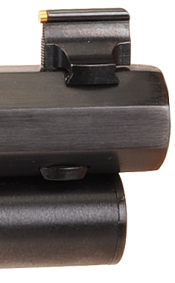
The CBA has an octagon barrel, rather than the round profile of the model G, which is essentially tapered round barrel that has been fluted and has approximately 7% less mass and weight. The fluting makes the barrel as rigid as the round barrel, but lighter. The perimeter of the fluted barrel is 2.56″ versus a 2.43″ circumference for the round barrel, so a case can be made for greater surface area and, therefore, more rapid heat dissipation.
The rear sight of the CBA is also different from the G Marlin. The CBA is fitted with a Marble Arms Sporting Rear Sight with a Semi-Buckhorn upright and white diamond notch marker. The sight elevator grabs the upright on the outside, assuring lateral alignment.
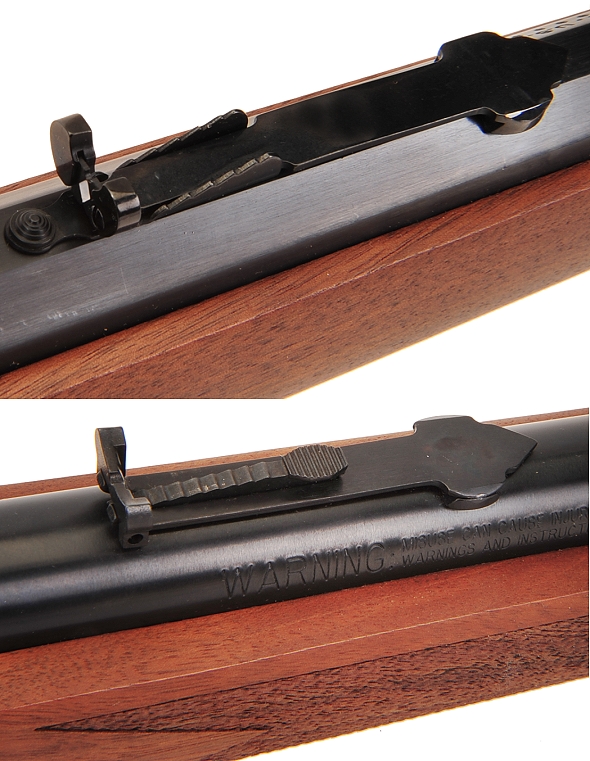
The Model 1895G has a flat top upright that folds out of the way of a scope objective bell and utilizes a single sight elevator. Both model rifles, regardless sight, are driftable, dove tail mounted.
The CBA version of the 1895, top rifle below, has a short, unadorned 1.4″ wide forearm compared to the longer, more bulbous, checkered, 1.8″ wide 1895G forearm. The Model 1895 CBA stocks are very similar to the stocks on the Model 336 saddle carbines of the 1950s and a personal preference. The slimmer stocks cut weight and, for me, they make a lever gun faster handling.

By extending the magazine tube on the CBA in comparison to the G model, the Model 1895 CBA picks up two extra rounds for a total of six, three more than the typical bolt action heavy hitter. The Cowboy version, unlike the Guide Gun version, is not supplied with swivel studs on the forearm tip or buttstock.
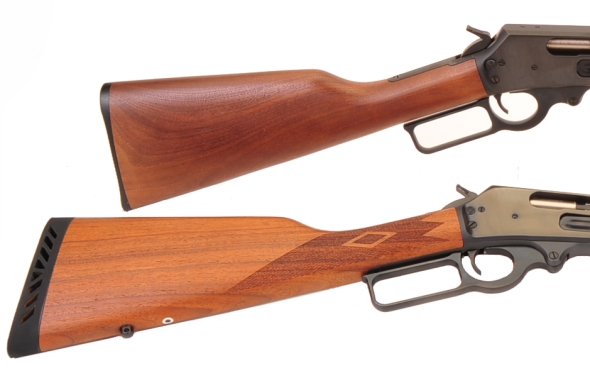
The CBA version’s stock is longer, but its recoil pad is shorter. Subsequently, both CBA and G versions have the same 13 3/8″ length of pull, consequently, the CBA recoil pad is thinner. While the CBA recoil pad is approximately the same thickness as the Marlin Model 336 chambered for the 30-30 WCF, the 45-70 cartridge is considerably larger. This proved not to be a problem with standard pressure 45-70 Gov’t factory ammunition, right up through 405 bullet weight. High performance 45-70 ammunition recoil with the thin recoil pad was… invigorating.

Marlin recommends Remington ammunition, the product used in testing the firearm. There are numerous manufacturers of ammunition that operates well above the SAAMI standard. Use of this ammunition is wide spread, but none the less slightly problematic and done at the recommendation of the ammunition not the firearm manufacturer. As there is no SAAMI or CIP +P or similar 45-70 standard for firearm or ammunition manufacturers to use as a basis for testing, an approval from a firearm manufacturer would be a blind buy in to an unknown condition.
And then shooting commenced….
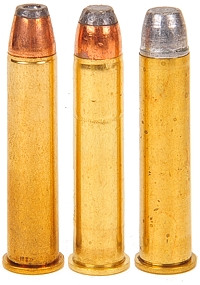
Quality, modern 45-70 Gov’t lever guns are nothing like the predecessors of the 50s and 60s. My old Marlin 336, now fifty years old, shot and shoots 100 yard groups in the 3″ to 4″ range. That degree of shot to shot precision was considered acceptable for a deer rifle back when it was made and, fortunately, all of the deer and hogs it has taken could not fit in this space between the bullets. Comparatively speaking… or comparatively writing, the modern Marlin is a varmint rifle and this degree of accuracy on Model 1895s has been typical over nearly the past two decades.
| Ammunition | Bullet Weight Grains |
Rated FPS 24″ |
Actual FPS 18.5 |
100 Yard 3 Shot Group “ |
| Winchester Super X | 300 | 1880 | 1643 | 3/4 |
| Remington Core-Lokt | 405 | 1330 | 1019 | 7/8 |
| Buffalo Bore +P | 430 | 1925 | 1878 | 1 |
Below, the best and worst groups from the table. Not only are the groups super for 100 yard hunting, but the precision is good enough for twice that distance at a minimum. I violated the unspoken laws of lever action rifles and mounted a scope to make sure the rifle’s performance and not by eyesight were being evaluated. Additionally, the rifle was shot from a sled, again, to separate the rifle’s mechanical accuracy and not my perpendicular posture.
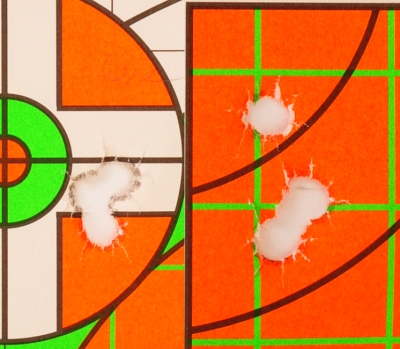
Any departing words of wisdom? Not hardly
I liked this configuration Model 1895 CBA. It is lighter and slimmer than my Model 1895 Guide Gun and it is as accurate. I like the barrel. It is old time looking and a pleasing aesthetic. I like the central elevator rear sight on my Guide Gun versus the CBA version; the folding upright comes in handy and it is a more rugged assembly. I ambivalent to the differences in the front sight.
The only issue of consequence was a heavy trigger pull that played a role in the largest three shot group. There was no creep, no roughness, just a 7 lbs 6 oz break and perhaps that would work itself out in use. That said, I have not handled other examples of this model, so others may very well be closer to a more typical 5 pound and a bit Marlin pull. On balance, a well made, accurate and flexible application lever gun that would deliver many years of service.
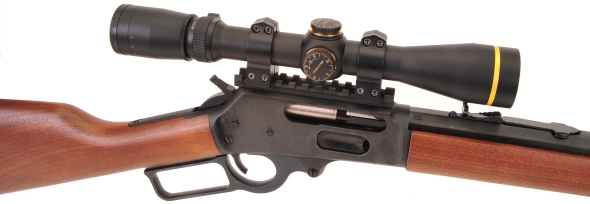

Email Notification